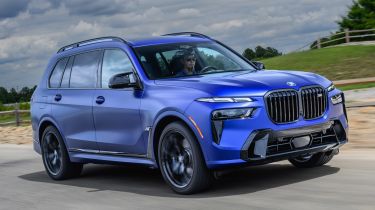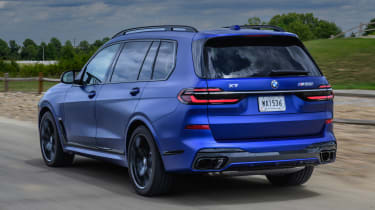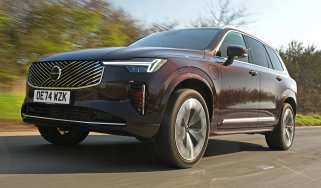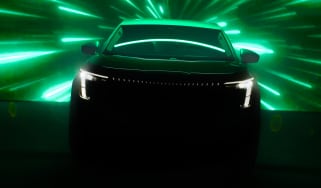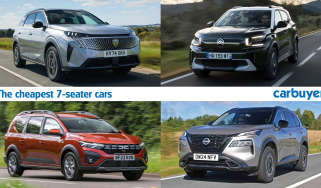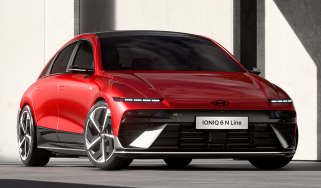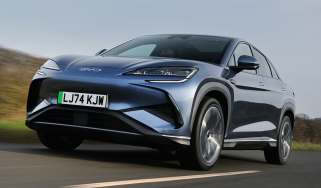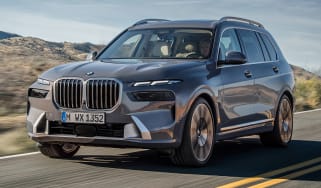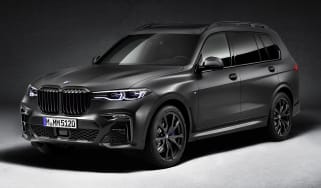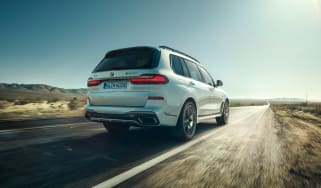BMW X7 SUV review
"The BMW X7 is a huge SUV that feels like a high-riding limousine, showcasing the manufacturer's latest technology"
Pros
- Good to drive for such a large car
- Powerful engines
- Enormous boot
Cons
- No plug-in hybrid yet
- BMW customer satisfaction is shaky
- A tad big for UK roads
The BMW X7 is the German manufacturer's first Range Rover rival, sitting at the top of its SUV range. It offers the comfort of a 7 Series saloon with the added capability of a high-riding off-roader in a taller and more fashionable package.
It's the largest and most luxurious SUV produced by the firm in a range that now spans from the small BMW X1, all the way through to a large SUV coupe in the shape of the BMW X6. The X7 is noticeably larger than the BMW X5, measuring well over five metres in length and two metres wide; it is, in fact, bigger than most other cars on the road, not to mention many parking spaces.
 Best luxury SUVs to buy in 2025
Best luxury SUVs to buy in 2025
Overall, the styling of the X7 is instantly recognisable as a BMW SUV – for better and for worse. The oversized BMW kidney grilles dominate the front of the car, growing dramatically compared with smaller BMW models and illuminated as a symbol of the car’s luxury status. It’s an aesthetic that has proved somewhat controversial among fans of the brand. It's certainly imposing, and there's plenty of chrome trim dotted all around the X7 to affirm its high price tag. Elsewhere the biggest BMW features the brand’s latest split-headlight design as well as a squared-off silhouette and wheel sizes of up to 23 inches.
Its boxy shape results in acres of interior space, and the X7 becomes the first fully-fledged seven-seater SUV in BMW's stable, with three rows of seats fitted as standard. If you don't need all of them, an upgrade replaces the middle bench with two luxurious individual seats for added comfort. Meanwhile, the BMW X5 can be specified with seven seats if you only need the third row occasionally. Everything in the X7 is electrically powered, from folding the seats down to opening both sections of the split tailgate, while air suspension allows you to drop the ride height by 40mm for easier loading. Even behind all seven seats, there's as much boot space as a supermini, while 2,120 litres open up with the rear seats folded down.
The X7’s engine range has also received an update for 2022. Every available engine features turbocharging, with a duo of six-cylinder units and a single V8 engine reserved for the flagship M60i model. Even base versions of the X7 have four-wheel drive and an eight-speed automatic gearbox, emphasising the car’s luxury status. The entry-level xDrive40d has 352bhp and manages around 36mpg (partly thanks to mild-hybrid technology), while the xDrive40i petrol has even more power at 376bhp, but is much less economical.
The range-topping 395bhp X7 M50d diesel has been discontinued for 2022. Buyers looking for even more speed will have to check out the flagship V8-powered M60i. This has 523bhp and does 0-62mph in 4.7 seconds – quite an incredible time given the car's size and weight. However, despite the substantial pace and grip on offer, the car's 2.7-tonne weight and vast size are difficult to disguise. Handling is competent rather than entertaining, with the equivalent V8 petrol Range Rover is the more satisfying car to drive.
However, as strong as these engines are, we expect owners after low running costs and business drivers will be hoping a plug-in hybrid appears soon to take on the Range Rover P440e. Mercedes has also announced a fully electric EQS SUV, but a rival from BMW seems a little way off.
On British roads, the BMW X7 feels smooth and composed thanks to its air suspension setup, and the chassis features all the latest tricks to mask its huge size. Optional rear steering improves agility, while active roll bars can automatically firm up to prevent lean in corners and soften to improve motorway ride comfort. The result is a car that feels like a slightly larger X5, and sportier than a Range Rover.
There aren't many trim levels offered for the X7, with the xDrive40d and 40i coming in Excellence or M Sport spec, and the M50d and M50i performance models essentially existing in the separate ‘M Model’ trim level. M Sport adds performance accessories inside and out for a sportier look. Costing over £80,000 from the off, lots of kit is standard, including two 12.3-inch displays for the instruments and infotainment system, and driver aids like cruise control.

